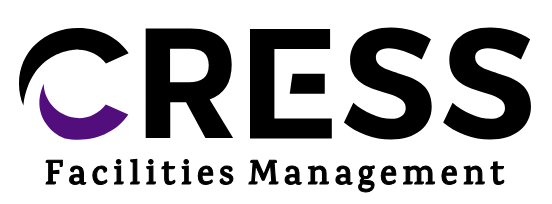
As we approach 2025, the commercial cleaning industry is entering a new era of innovation.
What used to be a behind-the-scenes service is now a front-line necessity for health, sustainability, and business success.
From smarter cleaning equipment to a greener approach, the landscape is evolving fast.
In this article, we dive into the biggest trends shaping commercial cleaning in 2025—and how businesses can adapt.
Introduction: A New Era in Commercial Cleaning
Commercial cleaning used to be simple: mop floors, empty bins, wipe desks.
But things have changed.
Today, clients expect higher hygiene standards, better accountability, and eco-friendly practices.
And it’s not just about COVID anymore—clean environments improve employee wellbeing and customer trust.
In 2025, efficiency, technology, and sustainability will define the industry.
Trend 1: Rise of Sustainable Cleaning Practices
Sustainability is now a top priority for companies across every sector.
And cleaning providers are being asked to step up.
In 2025, we’ll see:
- Increased demand for biodegradable, plant-based cleaning products
- Use of concentrated formulas that reduce packaging waste
- Microfibre cloths replacing disposable wipes
- Low-water usage equipment to reduce consumption
Clients want more than just a clean office—they want a cleaner planet.
Expect more questions during tenders about your environmental impact and carbon footprint.
Trend 2: Automation and Robotic Cleaners on the Rise
Robots aren’t replacing humans—but they’re helping them work smarter.
In large commercial environments like hospitals, shopping centres, and warehouses, automation is key.
Robotic cleaners:
- Operate around the clock with minimal supervision
- Are perfect for repetitive tasks like vacuuming or floor scrubbing
- Help reduce human fatigue and error
In 2025, businesses will invest in robotics not just for efficiency, but also for consistency.
It also helps reduce exposure to hazardous environments, improving worker safety.
Trend 3: Real-Time Monitoring with Smart Cleaning Technology
Gone are the days of static schedules and guesswork.
IoT (Internet of Things) and sensor-based systems now allow live tracking of cleanliness and supply levels.
Smart cleaning solutions in 2025 will include:
- Sensors in soap dispensers and bins that alert when refills or emptying is needed
- Footfall counters to trigger cleaning after peak times
- Dashboards that display which areas have been cleaned and when
This improves transparency and gives clients confidence.
Plus, it cuts waste by only cleaning where and when it’s needed.
Trend 4: Increased Demand for Deep Cleaning Services
Post-pandemic, regular deep cleans are now part of standard cleaning contracts.
In 2025, businesses will request deep cleaning more frequently, especially in:
- Healthcare and GP surgeries
- Educational buildings like schools and universities
- High-traffic offices and coworking spaces
- Restaurants and hospitality venues
Deep cleaning includes disinfection of touchpoints, carpet extraction, and air purification.
Many businesses now schedule quarterly deep cleans as part of routine maintenance—not just in response to outbreaks.
Trend 5: Eco-Friendly Products Become the Norm
Harsh chemicals are on the way out.
Not just because they’re bad for the environment—but because they’re bad for your staff and building users.
Modern eco products:
- Are just as effective as traditional chemicals
- Are free from chlorine, ammonia, and other irritants
- Are safer for skin contact and indoor air quality
In 2025, expect eco-certified products to become the default, not the exception.
Cleaning teams will be trained on how to use them correctly and efficiently.
Trend 6: Personalised Cleaning Plans for Businesses
Generic checklists don’t cut it anymore.
Each business has unique cleaning needs based on its size, industry, and usage.
In 2025, cleaning companies will:
- Conduct on-site audits to identify high-risk zones
- Use digital tools to build data-informed schedules
- Offer flexible packages that scale up or down with business operations
For example, a gym will need different cleaning than a financial office.
Personalisation leads to better results and smarter resource use.
Trend 7: Growth of Outsourced Specialist Cleaning Services
Not all cleaning jobs are equal.
Some require expertise, specialised equipment, and proper certification.
In 2025, more businesses will outsource tasks like:
- High-rise window cleaning
- Biohazard cleanup
- Graffiti and chewing gum removal
- End-of-tenancy deep cleans
Clients want guarantees of quality and compliance, especially in regulated industries.
Expect demand for niche services to grow, especially in urban and high-footfall areas.
Trend 8: Staff Training and Safety Take Centre Stage
A skilled, supported cleaning team delivers better results.
With more focus on infection control, safe chemical handling, and sustainability, ongoing training is essential.
In 2025, commercial cleaners will be expected to:
- Hold certifications in COSHH (Control of Substances Hazardous to Health)
- Understand eco-product use and dilution ratios
- Wear proper PPE for every task
- Use ergonomic equipment to reduce strain injuries
Clients also want to know that staff are treated fairly and ethically.
Transparency around wages, safety protocols, and training records will become a standard part of supplier audits.
Final Thoughts on Cleaning Industry Innovation
2025 will be a turning point for the commercial cleaning industry.
Technology, sustainability, and client expectations are reshaping every aspect of service delivery.
Cleaning companies that embrace change—by investing in smart tools, green practices, and quality staff—will lead the market.
For businesses, partnering with forward-thinking providers means safer spaces, stronger reputations, and a cleaner future for everyone.
FAQs
Will robots take over all commercial cleaning jobs?
No.
They’ll assist with repetitive tasks, but human cleaners are still essential for detail work, judgment, and supervision.
How can I tell if a cleaning product is truly eco-friendly?
Look for certifications like EU Ecolabel, Green Seal, or ISO 14001.
Avoid products with harsh chemicals or heavy fragrances.
Do smart sensors really improve cleaning efficiency?
Yes.
They help avoid over-cleaning, reduce labour waste, and provide real-time insights into cleanliness levels.
How often should a workplace be deep cleaned?
It varies.
Offices might schedule deep cleans quarterly.
Healthcare, gyms, or schools may need them monthly or even weekly.
